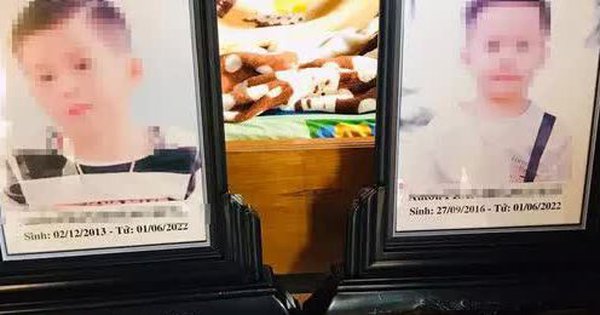The village in the middle of the jungle
Gia LaiHaving been relocated out of the Kon Chu Rang forest core for nearly 40 years, dozens of Ba Na households still return to the old village to live, work in fields and raise livestock.
Trai Bo, a flat valley about 5 hectares wide, surrounded by primeval forest, is more than 10 km from Kon Chu Rang Nature Reserve (K’bang district). Few people would have expected that, in the midst of the great thousands of people, there would be 17 houses on stilts of the Ba Na people, inhabited only by the elderly.

Everyone sat in the house on stilts in the middle of the Cow Farm drinking wine and chatting happily. Photo: Tran Hoa
The rainy season is over, also when the fields have been sown, many people ride motorbikes to new villages in Ha Lam and Dien Bien (Son Lang commune), about 15 km away to continue their work in the garden. other. The rest choose to stay in the village because they have to take care of the livestock or “like living in the forest”.
At noon in early April, the family’s buffalo herd was released into the forest. Mr. Dinh Van Thoi (58 years old) and many people in the village sat around a jar of can wine in front of his house on stilts. People were drinking and chatting happily about the “Covid-19 situation” coming from the radio hanging on the wall – the only source of information in a place where there was no electricity, no phone signal.
“There is no TV, refrigerator, rice cooker, but this is my whole childhood,” said Mr. Thoi, recalling his memories. He was born and raised in Cow Farm. When he was a child, every day Mr. Thoi followed his parents to herd buffaloes and cows and hunt wild animals and fish on the Ba River. Growing up a little, he was taught the craft of knitting by his father, mainly serving his family and the inhabitants of the village.
Mr. Cui describes his life and that of the people in the village more than 40 years ago as largely self-sufficient, largely isolated from the outside world. Every house has fields and gardens, raising buffaloes, cows, chickens…
In 1985, the government of Son Lang commune relocated households to live in Ha Lam and Dien Bien villages. Mr. Thoi and the others moved to a new place, a better life, a spacious house, adequate electricity, roads, schools, and stations.
At first, Mr. Thoi would go to the old village every week to stay for a few days to look after the 5 buffalo herds and work in the fields. In the past few years, he and his wife stayed longer, for a month or so after the harvest season, they returned to the new village. Needing something, he and his wife messaged people going in and out of the village, asking their eldest son, 26, to ride a motorbike to bring supplies. “Those are sunny days, but in the rainy season you have to walk in for more than two hours,” said Mr. Cui.

Ms. Dinh Thi Di feeds her herd of 4 pigs. Photo: Tran Hoa
Next to that, Ms. Dinh Thi Di (48 years old) after pouring food into the trough for the pigs to eat, entered the kitchen group to prepare lunch. The husband followed the buffalo herd into the forest early. Because she still has a pole of rice, a house on stilts and a buffalo left by her parents, her husband often stays at Trai Bo to look after. She lives in Ha Lam village to take care of her three children’s education. Sometimes she brings food and salt to her husband.
A few years ago, when her two children were grown up, she went to the old village to help her husband. “Weekends or vacations, sometimes I let my children come here for a few days to play,” said Ms. Di and said that this land is still wild and the climate is cool, so they like it very much.
Ms. Di said, many tourists come to the Cow Camp to camp overnight. They buy chickens and ducks from the people, hold parties right on the green grass. The other day, when I heard that they were about to open a concrete road to Trai Bo, Ms. Di was happy because in the rainy season, she didn’t have to walk for hours to get to the village, agricultural products and livestock could also be transported outside to sell at high prices. .
Mr. Trinh Viet Ty, Director of the Management Board of Kon Chu Rang Nature Reserve, said that in the period from 1967-1973, many people came here to live and raise cattle (mainly cows). village “Cow Camp” was born from there.
When they are relocated to a new place, because of the customs and habits of the Ba Na people, 17 households often choose to stay together to raise cattle and work in the fields, while living and studying mainly in the new village. Some are used to living in the deep forest, so they stay at the Cow Farm for a long time, from a week to a few months.

Trai Bo, an old village in the heart of Kon Chu Rang forest. Photo: Tran Hoa
In 2005, the Management Board coordinated with the government of Son Lang commune to announce, mobilize and propagate people living in this area not to destroy forests for farming, only to grow short-term agricultural crops and raise livestock.
“In order for people to have more income and stabilize their lives, the reserve has contracted to protect 1,500 hectares of forest, with 400,000 VND per hectare a year,” said Mr. Ty.
Tran Hoa
at Blogtuan.info – Source: vnexpress.net – Read the original article here



